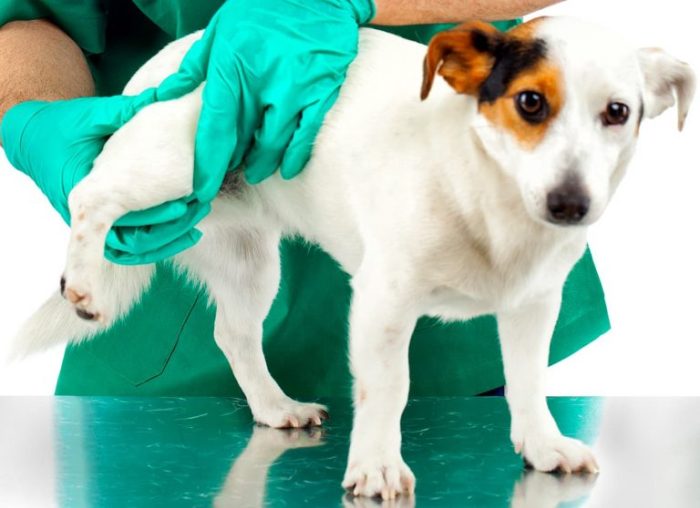Does pets best insurance cover hip dysplasia? Well, let’s dive into this paw-somely important question. Imagine your furry friend, all cute and cuddly, suddenly experiencing some serious hip issues. Hip dysplasia, a common ailment, can cause a lot of pain and discomfort for your beloved pet. So, the big question is: does pet insurance swoop in and save the day, or are you left footing the bill?
This guide will unravel the mysteries surrounding pet insurance and hip dysplasia, providing you with the crucial information you need to make informed decisions.
We’ll explore the nuances of pet insurance policies, dissecting common coverage types, exclusions, and how pre-existing conditions factor in. Then, we’ll take a deep dive into hip dysplasia itself, examining its causes, symptoms, and different severity levels. Finally, we’ll compare various insurance providers, analyze crucial factors affecting coverage decisions, and walk you through the treatment process, from surgery to rehabilitation.
Get ready for a comprehensive look at this crucial issue, complete with examples and tables to help you understand the whole process.
Understanding Pet Insurance Coverage
Pet insurance policies offer varying degrees of protection for your furry friend’s health needs. Understanding the scope of coverage, common exclusions, and how pre-existing conditions are handled is crucial for making an informed decision.
Types of Coverage and Exclusions
Pet insurance policies typically cover illnesses and injuries, but specific conditions and treatments might be excluded. Common exclusions include routine preventative care (like vaccinations and dental cleanings), pre-existing conditions (depending on the policy), and accidents or illnesses caused by negligence or intentional acts.
Defining Illnesses and Injuries
Policies often categorize illnesses and injuries based on their nature and severity. Some policies differentiate between accidental injuries and illnesses caused by genetic predisposition or lifestyle factors. This categorization affects the extent of coverage.
So, does pet insurance cover hip dysplasia? It’s a tricky question, like trying to find a good accident denver lawyer motorcycle ( accident denver lawyer motorcycle ) for your furry friend. The short answer is, maybe. It really depends on the policy and how much you’re willing to shell out for a dog who thinks a park bench is a throne.
Still, hoping for the best outcome is a good approach for your pet’s hip dysplasia care.
Pre-Existing Condition Handling
Policies usually have specific clauses regarding pre-existing conditions. Some policies exclude coverage for pre-existing conditions entirely, while others might cover them after a waiting period. The length of the waiting period and the definition of a pre-existing condition vary greatly between insurers.
Coverage Overview
| Coverage Type | Common Exclusions | Pre-existing Condition Handling |
|---|---|---|
| Accident coverage | Injuries caused by neglect, intentional acts | Waiting periods may apply, conditions defined by policy |
| Illness coverage | Routine preventative care, pre-existing conditions (policy dependent) | Waiting periods may apply, conditions defined by policy |
| Wellness Plans | Conditions that arise from negligence, intentional acts | Waiting periods may apply, conditions defined by policy |
Defining Hip Dysplasia in Pets: Does Pets Best Insurance Cover Hip Dysplasia
Hip dysplasia is a common condition in large and giant breed dogs, and occasionally in cats. It’s a developmental disorder affecting the hip joint, causing pain and discomfort. Understanding its progression and impact on your pet’s quality of life is crucial.
Causes, Symptoms, and Progression, Does pets best insurance cover hip dysplasia
Hip dysplasia is often genetic, but environmental factors can contribute to its development. Symptoms vary from mild lameness to severe pain, and the condition can progress over time, leading to arthritis and reduced mobility. Early detection is crucial for managing the condition.
Severity Levels
| Severity Level | Description |
|---|---|
| Mild | Slight lameness, pain only under stress |
| Moderate | Noticeable lameness, pain in some circumstances |
| Severe | Severe lameness, pain even at rest |
Diagnostic Procedures
Diagnosis often involves physical examination, X-rays, and possibly advanced imaging techniques like CT scans. Veterinarians evaluate the hip joint structure and range of motion to assess the severity of the dysplasia.
Coverage for Hip Dysplasia in Pet Insurance
Insurance coverage for hip dysplasia treatment is dependent on specific policy terms and pre-existing condition clauses. Understanding the exclusions is key to realistic expectations.
Specific Situations and Limitations

Source: googleusercontent.com
Insurance companies may cover surgical interventions, but not always non-surgical treatments. Policies may also limit the number of treatments or total payout amount.
Factors Affecting Insurance Payouts
The insurance provider’s assessment of the pet’s age, breed, and pre-existing conditions can significantly affect the payout amount. Veterinary recommendations and diagnostic procedures also play a role.
Coverage Amounts
| Coverage Type | Typical Coverage Amount |
|---|---|
| Surgical Treatment | Dependent on policy and severity, often up to a predetermined percentage of costs |
| Non-Surgical Treatment | Usually less coverage or no coverage for this type of treatment. |
Outcome Summary

Source: modernvet.com
So, does pet insurance cover hip dysplasia? The answer, as with most things in life, is complex. There are many factors that play a role, from the specific policy details to your pet’s individual circumstances. This guide has hopefully given you a comprehensive understanding of the landscape. By now, you should have a clearer picture of how pet insurance operates in relation to hip dysplasia.
Armed with this knowledge, you can confidently navigate the process of securing the best possible care for your furry friend. Remember, knowing your options is the first step to making the right decisions for your pet’s well-being.